Ad perpetuam rei memoriam – В вечную память события
После долгих шести лет войны, Германия, наконец, сложила оружие. Последнее нацистское правительство сдалось, войска по всем фронтам в большинстве своем прекратили сопротивление. Конечно, сама Вторая Мировая на этом еще не завершилась – Япония будет сопротивляться до осени, и только бомбы, сброшенные на Хиросиму и Нагасаки, сломят решимость императора.
Однако в Европе все было кончено. Акт о капитуляции вступил в силу в 23:01 8 мая по центральноевропейскому времени и в 1:01 9 мая по московскому – именно поэтому победу над Германией в Европе отмечают на день раньше.
Эта небольшая разница во времени и побудила нас сделать не одну, а целых две подборки лучших игр о самой масштабной и страшной войне в истории человечества. Сначала мы с вами поговорим о зарубежных проектах, а потом расскажем об играх отечественного производства.
Примечание: Наша подборка не является ТОПом, так как включает в себя игры различных жанров, некоторые из которых вышли сравнительно недавно, а другие уже успели справить свое десятилетие. Мы отлично осознаем, что кому-то могут больше нравиться симуляторы, а другим – глобальные пошаговые стратегии или RTS, поэтому решили просто представить список лучших проектов о Второй мировой войне.
Зарубежные игры о Второй мировой войне
Velvet Assassin
- Дата выхода: 2009 год
- Жанр: стелс-экшен
- Оценка (Metacritic): 61 балл
Мало кто причисляет эту игру к шедеврам, но, тем не менее, на мой взгляд, она вполне заслуживает места в нашем списке. В конце концов, многие любят стелс-экшены, а Velvet Assassin относится именно к этому жанру – редкость для игр, посвященных Второй мировой.
В основу сюжета Velvet Assassin легла история Виолетты Сабо (Violette Szabo), агента британской разведки. Настоящая Виолетта погибла в феврале 45-ого, и тут игра не грешит против правды жизни: в начале мы застаем нашу героиню в больнице в коматозном состоянии, а все, что мы делаем дальше – не более чем воспоминания умирающей мисс Сабо.
Действие происходит в Германии, Франции и Польше. Виолетта проникает на стратегические немецкие объекты, устраняет нацистских командиров, спасает проваленных разведчиков и саботирует коммуникации. Задания желательно выполнять бесшумно (приемы довольно ходовые: прятки в тенях, переодевание в форму СС и т. д.), хотя иногда позволяется и пострелять. При этом сохраняться где попало VA не разрешала, довольно сурово наказывая за ошибки.
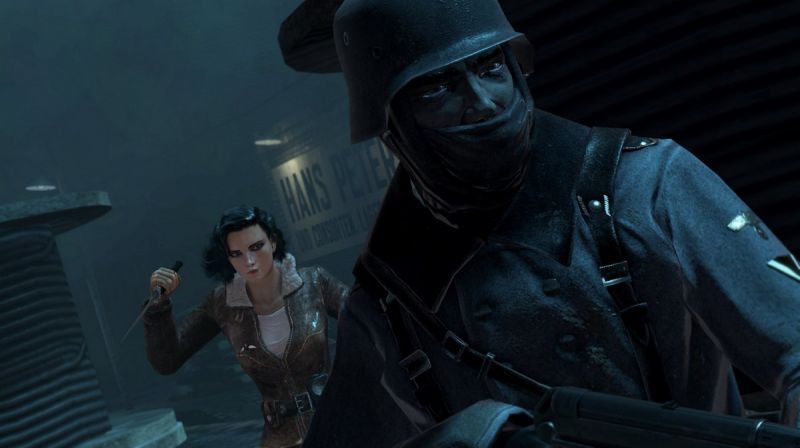
Большинство критиков высоко оценили аутентичность игры: война показана в Velvet Assassin очень реалистично, несмотря на неразрушаемое окружение и прочие очевидные недостатки движка. Одежда, оружие, язык, даже морфий, который прекрасная шпионка использует для восполнения здоровья (это обстоятельство едва не вызвало скандал при публикации в Австралии) смотрятся уместно в выбранном сеттинге.
Panzer General
- Дата выхода: 1994 год
- Жанр: стратегия
- Оценка (Metacritic): –
Panzer General – представитель практически вымершего племени варгеймов, от самого что ни на есть классика, Strategic Simulations, Inc. Тогда, в первой половине 90-ых, SSI (позднее поглощенные Ubisoft) купались в лучах успеха, и прославила их именно серия Panzer General.
«Генерал» игрался на схематической, составленной из шестиугольников карте. Отдельный юнит обозначал не солдата или танк, а целое подразделение, роту или батальон. Разумеется, игра была походовой и включала 50 сценариев. Проходить сценарии можно было как по отдельности, так и в рамках масштабной кампании. Правда, тут игроков ждал главный удар со стороны разработчика: в кампании была представлена ровно одна сторона – германский Вермахт.
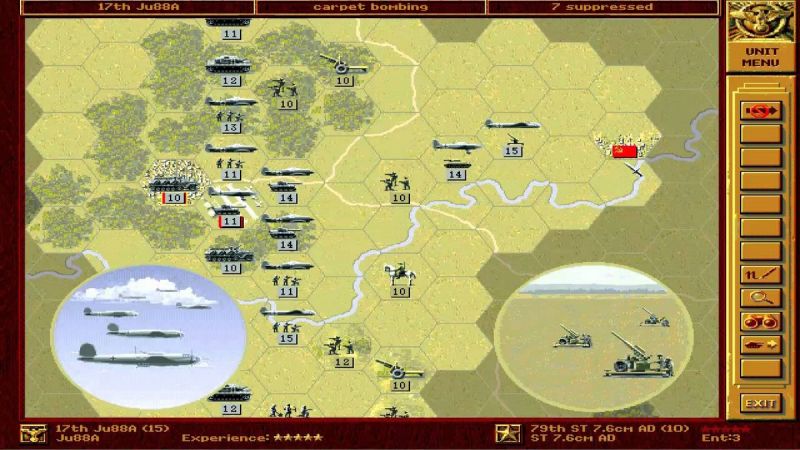
Panzer General предполагал возможность кардинально изменить историю. Так, можно было высадить десант в Британии (в реальности англичанам удалось пресечь все попытки гитлеровских войск сделать это) или убедить командование Вермахта развернуться на Москву, а не тратить время под Киевом. И если виртуальный Гудериан одерживал обе победы, на туманном Альбионе и под Москвой, игра заканчивалась… штурмом Вашингтона. В случае же неудачи, генерал мог покрыть себя славой, отчаянно защищая от союзников Берлин.
Конечно, не всем понравилась такая однобокость, и уже в 1995 году SSI выпустили Allied General, включавший советскую, английскую и американскую кампании. За ним воспоследовал еще почти десяток сиквелов, включая полностью трехмерный Panzer General 3D, а в 2011 Slitherine издали Panzer Corps – трибьют-переиздание оригинального Panzer General. Серия настолько полюбилась фанатам военной истории, что сценарии продолжают выходить и по сей день: сейчас их накопилось уже почти 2 с половиной тысячи.
Call of Duty
- Дата выхода: 2003 год
- Жанр: стратегия шутер
- Оценка (Metacritic): 91 балл
Да, теперь Call of Duty ассоциируется преимущественно с Ближним Востоком, а последние серии так и вовсе устремились в будущее, но давайте вспомним, как все начиналось. Самая первая CoD была посвящена именно Второй мировой войне, а игроку предстояло тянуть лямку простого солдата: сперва американского десантника Джоя Мартина, затем подданного Его величества Джека Эванса, и, наконец, красноармейца Алексея Ивановича Воронина.
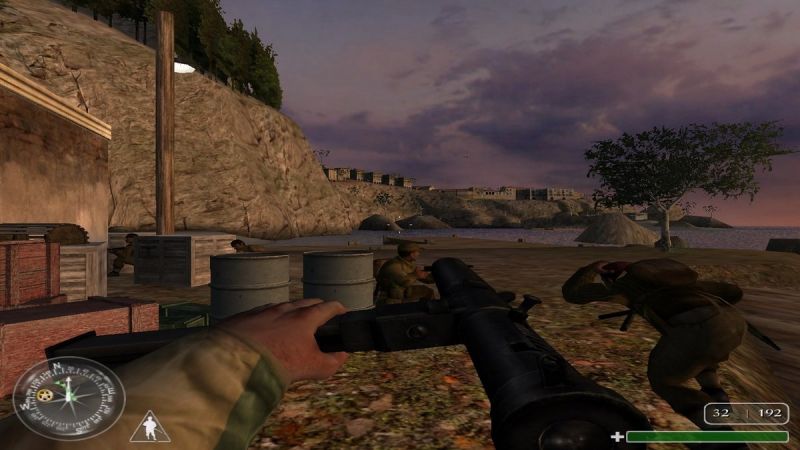
Части, к которым приписаны наши герои, по сюжету выполняли различные задания. В игре можно было поучаствовать в высадке в Нормандии, в Сталинградской битве, в Висло-Одерской операции, а дослужившемуся до лейтенанта Воронину разработчики даже доверили поднять знамя Победы над Рейхстагом.
В Call of Duty сделан большой шаг в сторону реализма. Игровому персонажу полагалось всего несколько слотов для оружия – два под крупные стволы, один под пистолет и еще один – под связку гранат. Это был разительный контраст с классическим шутерами, где нормальным количеством считались 10-12 пушек. Кроме того, в Call of Duty было четыре уровня сложности, и чем выше, тем больше война походила на настоящую: на последнем из них, Veteran, не было аптечек, а почти любое ранение превращалось в серьезную проблему.
Но что еще важнее, Infinity Ward напомнили нам, что в одиночку люди, как правило, не воюют. Одна из главных заслуг первой игры в нескончаемой серии – появление самостоятельных союзников, управляемых искусственным интеллектом.
И хотя сейчас можно задуматься о том, к чему привели потом проданные 4.5 миллиона копий игры, но Call of Duty по праву занимает в нашем хит-параде восьмое место.
Silent Hunter III
- Дата выхода: 2005 год
- Жанр: симулятор подводной лодки
- Оценка (Metacritic): 90 баллов
Как и тактические игры, симуляторы сейчас переживают не лучшие времена, а уж симуляторы субмарины мы уж точно встречаем нечасто.
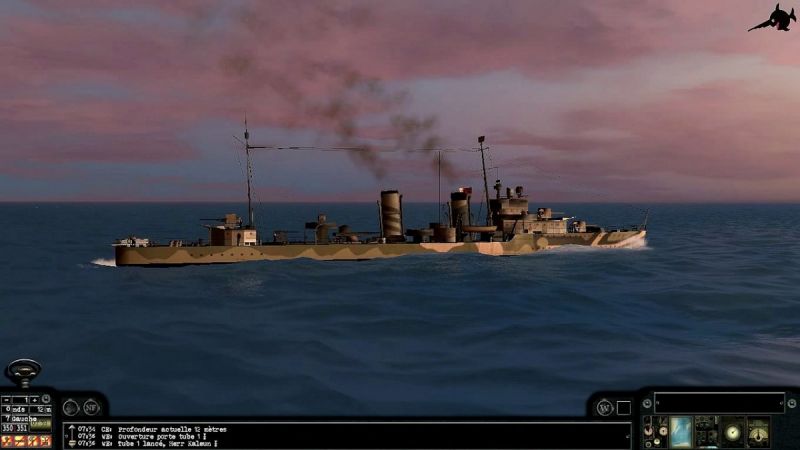
Silent Hunter III предлагала игроку стать частью «Кригсмарине» и заступить на капитанский мостик одной из немецких подлодок, наводивших ужас на воды и побережья нескольких океанов. Степень правдоподобия здесь зашкаливала: все повреждения подлодки честно рассчитывались, какой-то процент торпед мог оказаться бракованным, и даже перископ приходилось стабилизировать.
Немаловажную роль играл и человеческий фактор: у каждого члена команды была специализация и целый ворох параметров, так что, помимо патрулирования моря и выполнения разнообразных боевых задач, нашему лейтенанту цур зее приходилось заниматься еще и кадровой работой. Кого назначить в какой отсек, как распределить обязанности, кого стоит обучить новой специальности, а кому неплохо и так – обо всем этом надо было думать.
Silent Hunter III стал венцом развития серии: четвертая и пятая части так и не смогли повторить успеха своего серьезного, застегнутого на все пуговицы предшественника.
Company of Heroes
- Дата выхода: 2006 год
- Жанр: стратегия
- Оценка (Metacritic): 93 балла
Оригинальная Company of Heroes представляла собой, по сути, попытку Relic Entertainment перенести удачную игровую модель Warhammer 40000: Dawn of War в реалии Второй мировой войны. Тот же уровень отрядов, та же борьба за ресурсы (топливо, персонал и амуниция), даже система раздачи оружия осталась нетронутой. Только вместо Космодесанта и Хаоса – американская и немецкая армии, каждая из которых поделена на три направления (у США) или три доктрины (у Германии).
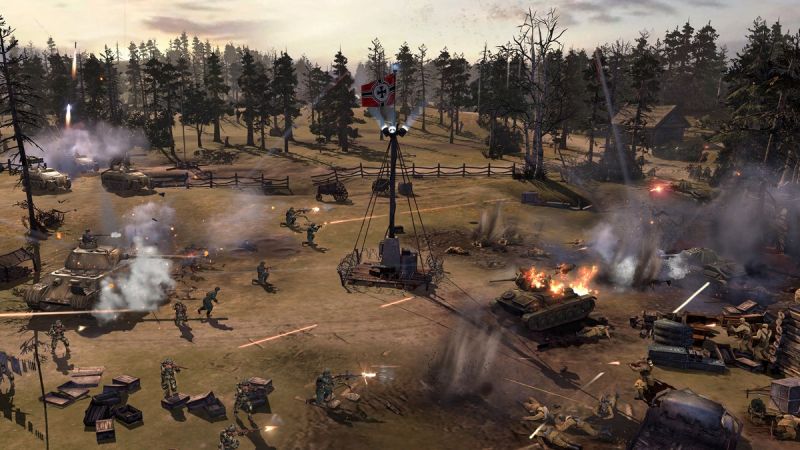
Главным нововведением CoH стали укрытия: теперь юнит можно было как-нибудь поудачнее поставить за стеной или, скажем, остовом танка, чтобы противнику сложнее было по нему попасть. К тому же в игре появились инженерные войска, специализировавшиеся на возведении баррикад, противотанковых ежей и прочих средств эшелонированной обороны. Во многих случаях укрытия были просто необходимы: в Company of Heroes, как и «Вархаммере», у отрядов был боевой дух, катастрофически снижавшийся, если солдаты попадали под артиллерийский или пулеметный огонь. В худшем случае отряд просто вжимался в землю и прекращал стрелять – снова дань реализму.
CoH не проходилась танковым рашем, заставляя игрока работать мозгами и заботиться о контроле территории и подавлении огневых точек. Это сильно замедляло процесс, но практически идеальный игровой баланс и отполированный гейм-дизайн позволили многим влиятельным игровым изданиям назвать Company of Heroes лучшей игрой 2006 года.
Hearts of Iron III и IV
- Дата выхода: 2009 и 2016 год
- Жанр: стратегия
- Оценка (Metacritic): 77 и 83 балла
Paradox веников не вяжут: их глобальные стратегии – лучшие в своем роде. Hearts of Iron, собрат великой Europa Universalis, не ставит задачу забросить нас на Иводзиму, в Арденны или в окопы Сталинграда. Нет, в «Железных сердцах» игроку выпадает уникальный шанс посмотреть на войну глазами склонившегося над картой генерала – на уровне армий, фронтов и целых стран.
Игра начинается еще в 1936 году, и позволяет возглавить любое из 160 государств. Дело идет к мировой войне, так что даже если вы правите, скажем, какой-нибудь полуколонией на задворках планеты, то вам придется выбирать из трех военно-политических блоков: западных союзников, стран Оси и Коминтерна.
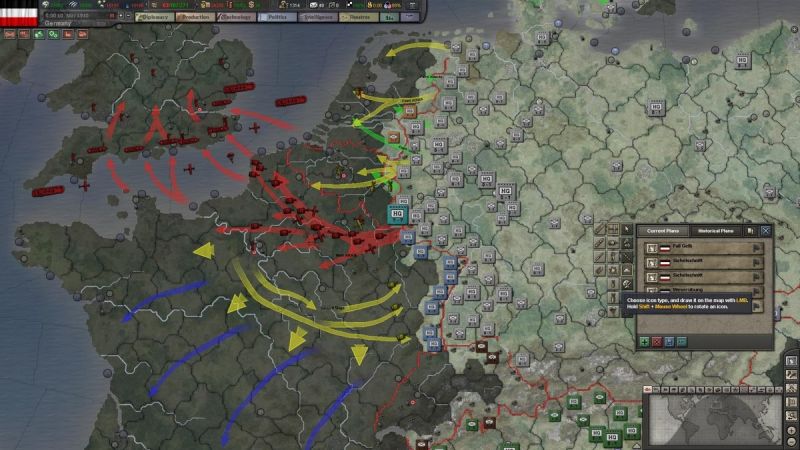
Hearts of Iron основательна и сложна: чтобы играть хоть сколько-нибудь успешно, нужно учитывать добрый десяток факторов. Климат, погодные условия, снабжение, производство, природные и человеческие ресурсы, научно-технический прогресс… Моделируется практически все, от выработки топлива из сырой нефти до системы управления войсками (штабы, цепочки приказов и т. д.).
Так что если вы умеете и любите мыслить масштабно, а реальное время Company of Heroes для вас слишком быстрое, то HoI – именно то, что вы ищете. Ничего лучше в стратегиях про войну точно не найдете.
Medal of Honor
- Дата выхода: 1999 год
- Жанр: шутер
- Оценка (Metacritic): 92 балла
В 1998 году вышел нашумевший фильм «Спасение рядового Райана», а уже на следующий год появилась первая «Медаль за отвагу» – PlayStation-эксклюзив, к созданию которого руку тоже приложил великий Стивен Спилберг.
Неудивительно, что Medal of Honor получилась весьма кинематографичной. Наше альтер-эго – летчик Джеймс Паттерсон, проявивший себя как герой после того, как его подбили в небе над Нормандией. Командование предлагает Паттерсону вступить в Управление специальных служб, и Джеймс соглашается.
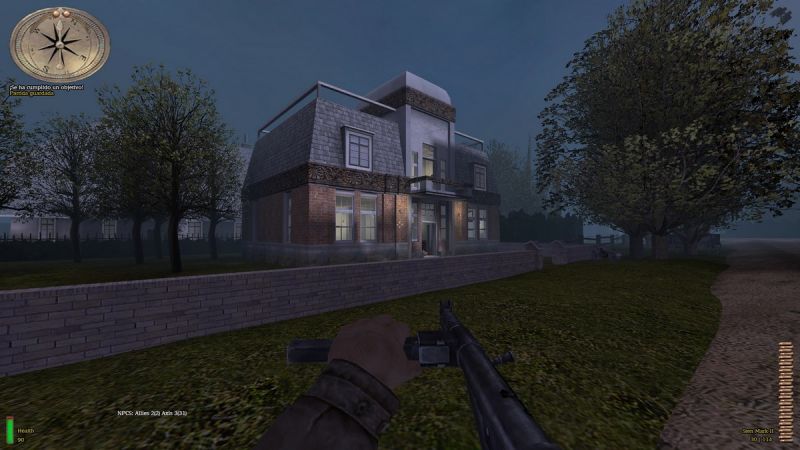
Игра состоит из 7 миссий, разделенных на 22 уровня. В основном мы уничтожаем всевозможные устрашающие порождения военно-технического гения Рейха: от новейшей подлодки до ракеты Фау-2, хотя есть и исключения: в шестой миссии Паттерсон спасает от гибели бесценные произведения искусства. ИИ не блистал даже по меркам конца 90-ых, но ситуацию спасали скрипты и элементы окружения: солдат противника мог сесть за пулемет и нашпиговать героя свинцом, а на первый взгляд безоружные ученые выхватывали из-под полы белых халатов пистолеты и не раздумывая палили в спину.
С тех пор утекло много воды, новая MoH выходила практически каждый год, но именно первая игра периодически появляется в списках вроде «Топ-25 лучших игр для PlayStation».
Commandos: Behind the Enemy Lines
- Дата выхода: 1998 год
- Жанр: тактика
- Оценка (Metacritic): –
По правде сказать, когда я садился писать эту подборку, именно Commandos пришли мне в голову первыми. Возможно, потому, что похожую на них игру найти весьма сложно, а может быть, сказались личные впечатления: я хорошо помню вечера, проведенные «в тылу врага» в компании Зеленого Берета, Шпиона, Снайпера и прочих колоритных личностей.
В Commandos мы возглавляем диверсионную группу, выполняющую ответственные миссии от Скандинавии до Алжира. Каждый из наших бравых бойцов обладает уникальными способностями: Снайпер бесшумно снимает врагов, Морской пехотинец умеет управлять лодками и отлично плавает с аквалангом, Шофер виртуозно водит все от мотоцикла до тяжелого танка.
Каждое из заданий в Behind the Enemy Lines – маленький шедевр, начиная от красивейших задников и заканчивая выверенной логикой. Неважно, убиваем ли мы какого-нибудь штурмбаннфюрера или вытаскиваем из передряги сбитого пилота, чтобы успешно пройти задание, нужно много думать и выстраивать целые схемы: вот тут оглушить часового и оттащить его тело куда-нибудь в уголок, здесь перерезать «колючку», а там уже Шпион доберется до заветного черного мундира… Вторая часть серии во многих отношениях даже лучше оригинала.
Battlefield 1942
- Дата выхода: 2002 год
- Жанр: шутер
- Оценка (Metacritic): 89 баллов
DICE в нашем хит-параде все-таки обойдут вечных соперников Infinity Ward. Мы уже говорили, что один в поле не воин – но в Call of Duty роль соседа по строю доверили AI, а Battlefield 1942 позволила игрокам кооперироваться между собой.
Ставка прошла: командный шутер снискал немалую популярность. Вместо простого набивания фрагов DICE предложили игру на удержание точек, а каждую из пяти сторон (в Battlefield 1942 в качестве самостоятельной фракции появилась Япония, дополнения ввели еще Италию и французское Сопротивление) снабдили уникальным оружием и техникой. К тому же в игре появились боевые специальности персонажей (читай классы): снайперы, штурмовики, санитары, инженеры и гранатометчики.
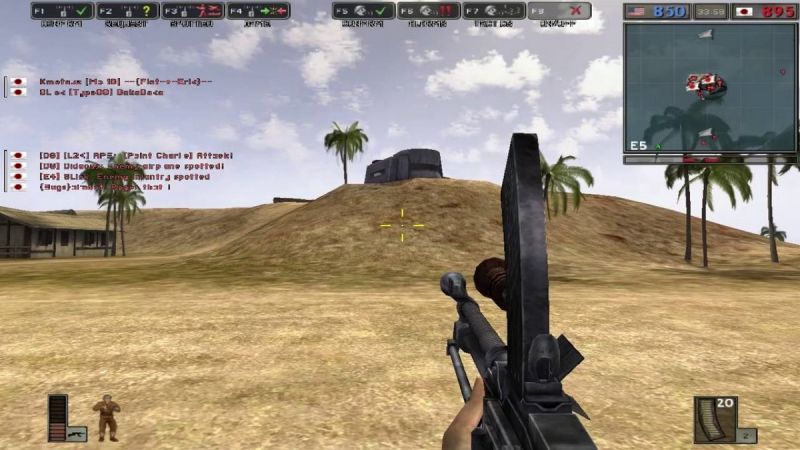
Хотя увлекающиеся военной историей люди и пеняли Battlefield 1942 на многочисленные ошибки, влияние игры на индустрию сложно переоценить. На мой взгляд, именно она и ее идейные продолжатели, а не многочисленные симуляторы танков, самолетов и кораблей подготовили почву для успеха серий «World of» от Wargaming.net.
Wolfenstein 3D
- Дата выхода: 1992 год
- Жанр: шутер
- Оценка (Metacritic): –
Конечно, война, показанная в Wolfenstein бесконечно далека от настоящей Второй мировой. Это война Уильма Блажковича, где с одной стороны выступает сам бравый герой, а с другой – паноптикум параноических штампов. Уровни, почти как лунная база в фильме «Железное небо», часто спланированы в виде гигантской свастики (!). Блажковичу противостоят призраки, жуткие доктора-экспериментаторы «Аненербе», серокожие мутанты с автоматами, вмонтированными прямо в грудную клетку, десяток клонов Ганса Гросса, воплощенного представления о нацистском офицере. В финальном же сражении B. J. сходится с самим Адольфом Гитлером, облаченным в экзоскелетную броню.
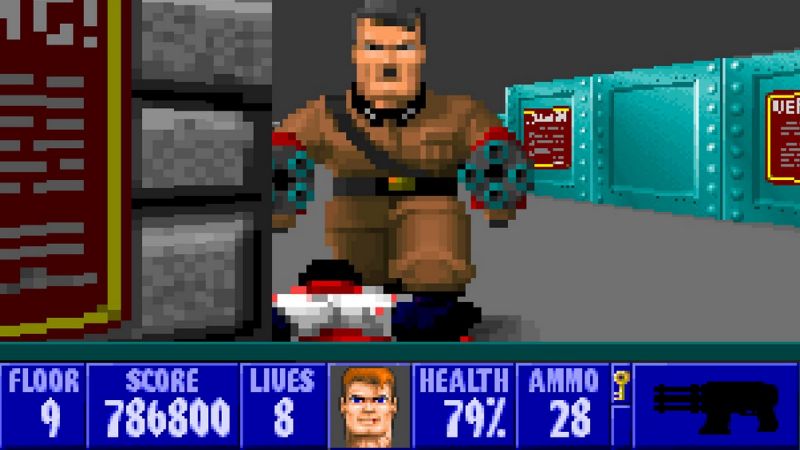
Потом вышел еще и приквел, где герой успешно вырывал из рук нацистов древний артефакт – Копье Судьбы (Spear of Destiny), а авторская фантазия уж совсем зашкаливала. Но игроки, несмотря на все странности сеттинга, помнят Wolfenstein 3D и по сей день: бренд жив, новые «Вульфенштейны» появляются довольно регулярно (в 2014-2015 годах состоялось очередное возрождение серии), и практически каждый из них содержит уровень, полный спрайтовых немецких солдат – маленький трибьют легендарной игре.
Отечественные игры о Второй мировой войне
Серия «Блицкриг»
- Дата выхода: 2003-2017 годы
- Жанр: стратегия
- Оценка (Metacritic): в среднем 70 баллов
В серию «Блицкриг» в настоящее время входят 3 полномасштабных проекта и несколько крупных дополнений. Первая часть является стратегией в реальном времени, разработанной российской студией Nival Interactive и выпущенную в марте 2003 года.
Сюжетная линия «Блицкриг» базируется на Великой отечественной войне. Игрокам доступны три одиночных кампании: Союзники (американские и британские военные силы), нацистская Германия и СССР. Каждая кампания состоит ищ нескольких крупных глав, охватывающих различные этапы войны. Битвы в игре разворачиваются на территориях 9 стран.
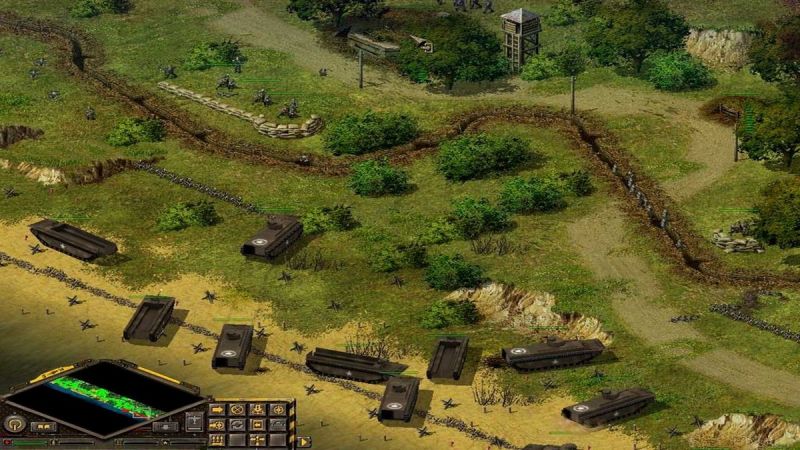
Главным отличием «Блицкриг» от аналогичных стратегий того времени считается отсутствие в ней необходимости создания собственной базы, зато имеется возможность захвата вражеских командных центров. В начале каждой миссии игрок получает несколько соединений пехоты и единиц техники, с помощью которых он должен выполнить определенные задания.
Данная RTS могла похвастаться красивой на тот момент времени графикой, увлекательным геймплеем и масштабными сюжетными кампаниями, поэтому была высоко оценена прессой и игроками.
Уже через 2 года на полках магазинов появилась вторая часть «Блицкриг», которая охватывала большинство основных фронтов Второй мировой войны, начиная от Европы и заканчивая тихоокеанскими островами. Ее разработкой вновь занималась российская команда Nival, а в качестве графического движка использовался модифицированный Enigma Engine.
Критиков и игроков приятно удивил невероятный масштаб продолжения – в нем имелось свыше 300 единиц разнообразной техники и более 60 типов пехоты, а общее число миссий переваливало за 60 штук.
В плане игрового процесса «Блицкриг 2» не сильно отличался от оригинала, правда, без нововведений все же не обошлось. К примеру, разработчиками была добавлена взаимосвязанная структура заданий, то есть результаты в одной миссии напрямую влияли на опыт и состав подразделений, подконтрольных пользователю в следующих битвах. Появилась также глобальная карта, на которой игрок мог оценить положение дел на фронте, взглянуть на свои награды и изучить уровень своих войск. В результате данная игра вошла в список лучших стратегий про Вторую мировую войну по мнению многих изданий.
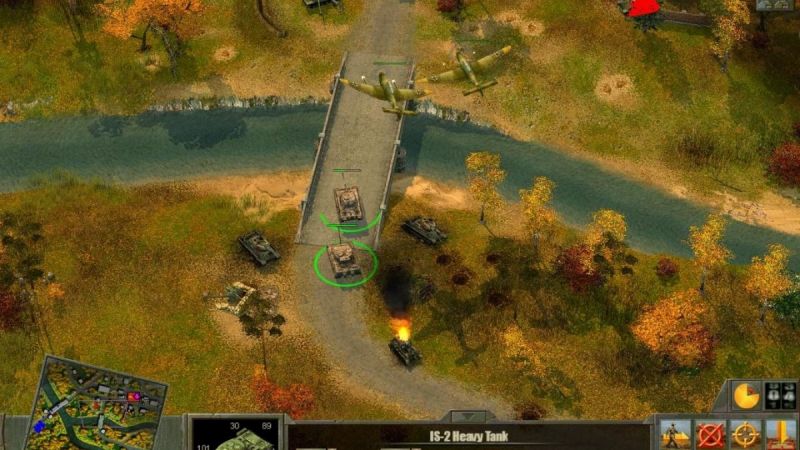
Через год вышло крупное дополнение к «Блицкриг 2» под названием «Возмездие», посвященное последней стадии военных действий на Восточном фронте. В 2007 году состоялся релиз аддона «Освобождение», рассказывающее о боевых столкновениях между немецкими войсками и силами союзников.
Однако в виду уменьшения популярности жанра стратегий компания Nival решила отложить серию «Блицкриг» в дальний ящик. Третья часть была анонсирована лишь в августе 2013 года. Через 2 года состоялся ее релиз в раннем доступе в сервисе Steam. Многие поклонники отмечают, что игра «Блицкриг 3» значительно уступает предыдущим частям и в настоящее время не способна предложить игрокам интересный геймплей. В список попала только из-за своей причастности к легендарной серии.
Ил-2 Штурмовик
- Дата выхода: 2001 год
- Жанр: авиасимулятор
- Оценка (Metacritic): 91 балл
Не одними только стратегиями славятся отечественные разработчики, и прямым доказательством тому является «Ил-2 Штурмовик» – авиационный симулятор, созданный студией Maddox Games в 2001 году. На момент релиза этот авиасимулятор являлся наиболее технологичной игрой в своем жанре.
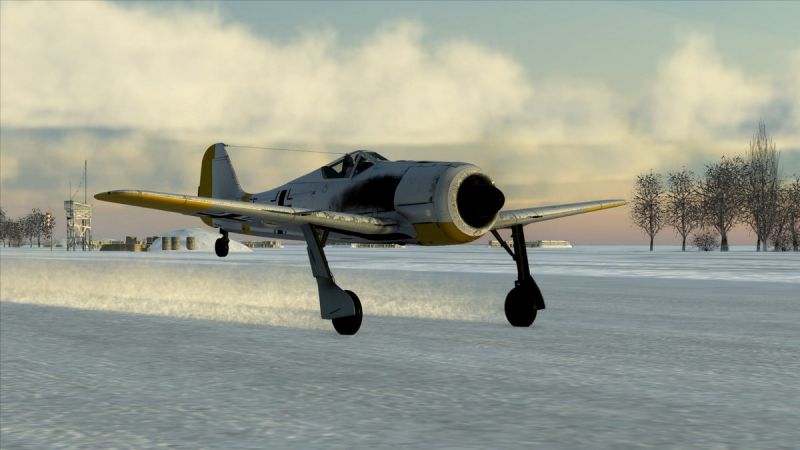
Воздушные битвы в «Ил-2 Штурмовик» поражают своими масштабами и уровнем проработки. Она удостоилась множества наград, как от российских, так и от зарубежных изданий. Редакция сайта IGN и вовсе добавила ее в ТОП-25 лучших PC игр.
Этот авиасимулятор известен многим не только своей красивой картинкой, но и огромным вниманием к деталям, а также захватывающими заданиями и большим количеством различных сценариев. Для него было выпущено множество пользовательских модов, значительно разнообразивших геймплей.
Смерть шпионам
- Дата выхода: 2007 год
- Жанр: стелс-экшен
- Оценка (Metacritic): 69 баллов
Что случится, если отправить знаменитого Агента 47 в прошлое, во времена Второй мировой войны? Видимо такие мысли крутились у ребят из российской студии Haggard Games, когда они создавали игру «Смерть шпионам», представляющую собой экшен с элементами стелса.
Действия игры разворачиваются в 1943 году. В качестве протагониста выступает член Главного управления военной контрразведки СМЕРШ. Ему приходится выполнять различные сверхсекретные миссии, связанные с устранением вражеских генералов, получением важной информации и проведением диверсий в тылу противника.
Геймплей проекта схож с игровым процессом Hitman, то есть игрок появляется в огромной локации, где ему необходимо выполнить одно или несколько заданий любыми доступными методами. Прохождение «Смерть шпионам» осложнено тем, что враги обладают умным Al, к примеру, они способны заметить кровь на одежде героя или начать подозревать его, если он будет носить форму солдата, но не иметь при себе автомата.
В целом проект был положительно оценен игроками и критиками, хоть и копировал механики других игр. Впрочем, он не снискал большой популярности у игроков, поэтому вторая часть вышла лишь через 9 лет и только с помощью иностранного издателя. Так что сделайте доброе дело и купите хотя бы оригинал, иначе продолжение этого неплохого стелс-экшена нам предстоит ждать еще 10 лет.
Серия «В тылу врага»
- Дата выхода: 2004-2016 годы
- Жанр: стратегии с элементами тактики
- Оценка (Metacritic): в среднем 70 баллов
Около 15 лет назад на свет появилась первая часть известной игровой серии «В тылу врага», которая была создана украинской студией Best Way. Она является стратегией в реальном времени с элементами тактики, RPG и даже симулятора.
Во многих стратегиях основу геймплея составляют поднятие экономики своей фракции и ведение грамотных боевых действий, однако в творении украинцев во главе угла находятся разведка и подготовка к грядущим битвам. К преимуществам проекта также относят реалистичность (снаряды могут не долететь до цели, если она находится слишком далеко, транспорт требует пополнения горючего и так далее) и хорошую физику (присутствует разрушаемость и система укрытий).
В 2006 году состоялся выход второй части, созданной той же командой из Украины. Разработчики не стали значительно перерабатывать игровой процесс, а просто улучшили игровые механики оригинала и подтянули картину. Позднее вышло несколько крупных расширений, но фанаты серии продолжают ждать релиза полноценной 3-й части.
Морской охотник
- Дата выхода: 2009 год
- Жанр: симулятор торпедного катера
- Оценка (Metacritic): –
Компания Акелла тоже захотела внести свой вклад в выпуск игр о Второй мировой войне, поэтому профинансировала разработку проекта о торпедных катерах. Первая информация о нем появилась еще в 2004 году, однако вышел он лишь через 5 лет. Однако, несмотря на длительный период разработки, в итоге этот проект оказался неплохим симулятором с оригинальным геймплеем.
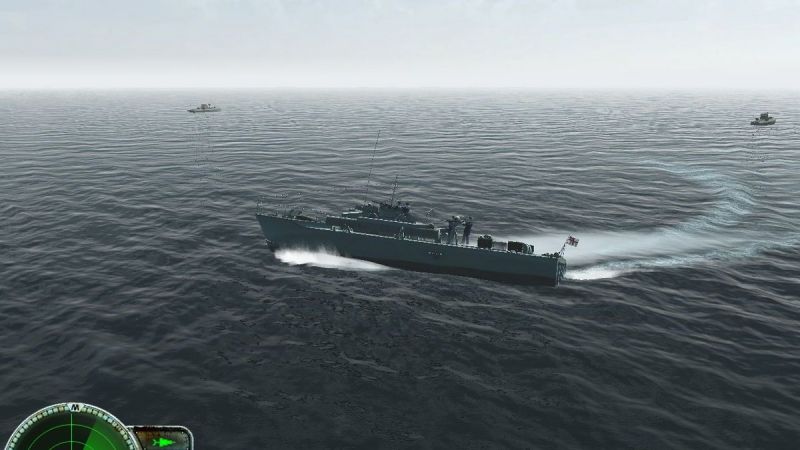
Основная особенность «Морского охотника» заключается в возможности не только следить за ходом всего сражения, отдавая приказы разным боевым суднам, но и в мгновенном перемещении за штурвал небольшого катера, способного отстреливаться от авиации противника или потопить огромный вражеский корабль.
Задания в игре базируются на реальных морских баталиях соответствующей эпохи, а все модели техники в точности копируют реальные прототипы. К тому же проект даже сейчас выглядит довольно красиво. Особенно хорошо у разработчиков удалось море.
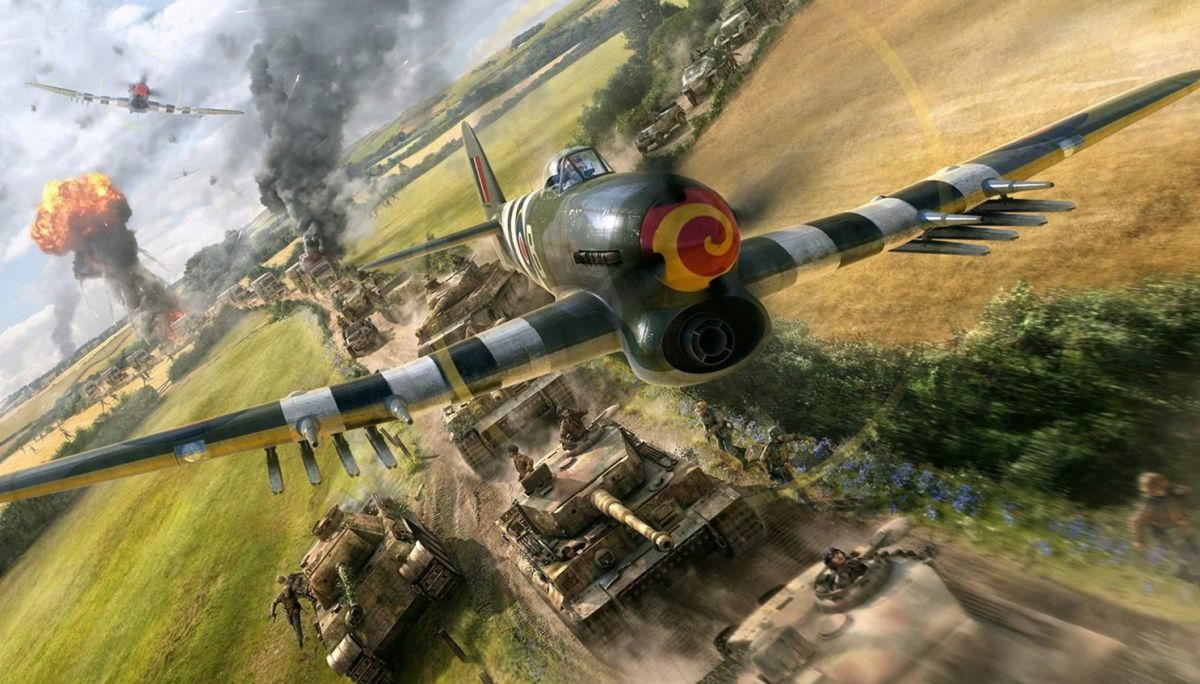
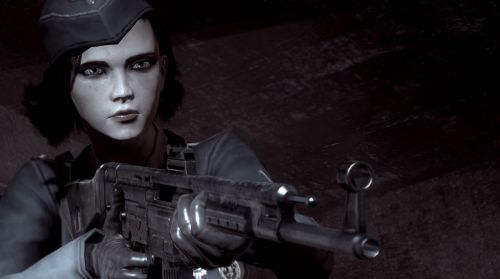
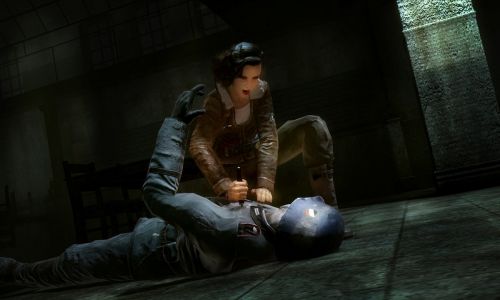

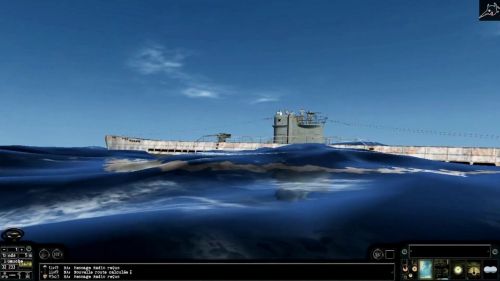
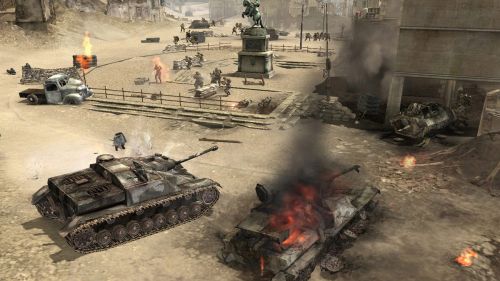
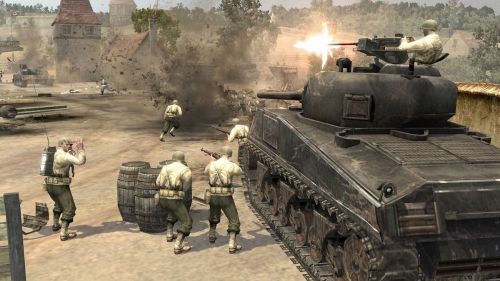
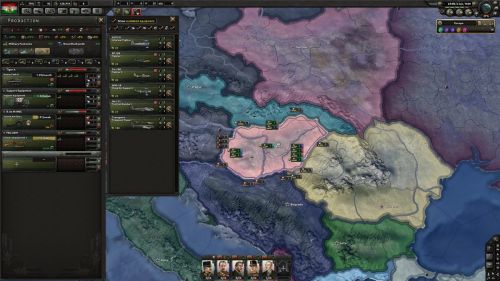
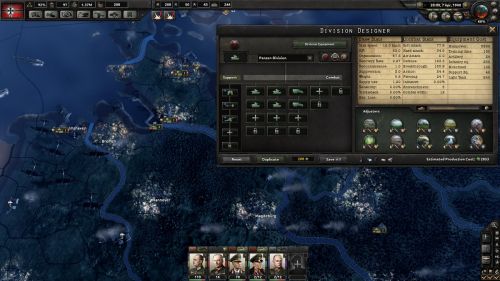
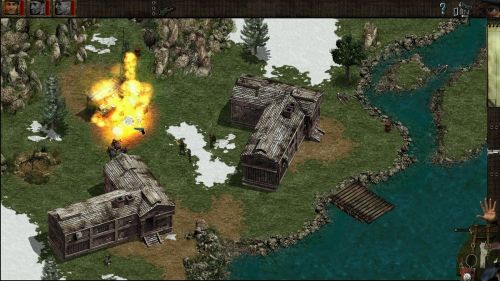
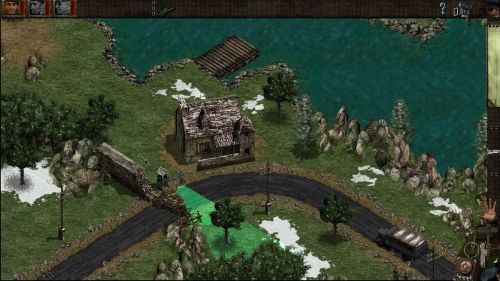
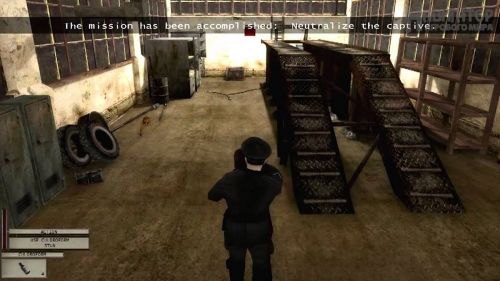
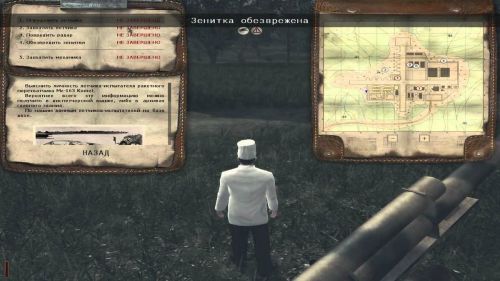


Комментарии